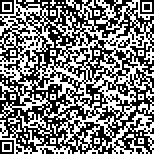| 引用本文: | 韩海瑞,赵玲玲,林伟,范明明.基于数据挖掘和网络药理学探讨中药治疗功能性消化不良的用药规律及作用机制[J].中国现代应用药学,2023,40(1):47-56. |
| HAN Hai-rui,ZHAO Ling-ling,LIN Wei,FAN Ming-ming.Study on Medication Rules and Mechanism of Traditional Chinese Medicine in Treating Functional Dyspepsia Based on Data Mining and Network Pharmacology[J].Chin J Mod Appl Pharm(中国现代应用药学),2023,40(1):47-56. |
|
| |
|
|
| 本文已被:浏览 1246次 下载 722次 |

码上扫一扫! |
|
|
| 基于数据挖掘和网络药理学探讨中药治疗功能性消化不良的用药规律及作用机制 |
|
韩海瑞, 赵玲玲, 林伟, 范明明
|
|
黑龙江省中医药科学院, 哈尔滨 150036
|
|
| 摘要: |
| 目的 基于数据挖掘和网络药理学探讨中药治疗功能性消化不良(functional dyspepsia,FD)的用药规律及作用机制。方法 在中国知网、万方和维普数据库检索建库至2021年11月临床治疗FD的相关文献,建立处方数据库。规范中药信息后运用WPS Office进行处方用药规律分析,包括用药频次、四气、五味、归经和功效;借助古今医案云平台进行聚类分析;运用SPSS Modeler软件进行关联规则分析和复杂网络分析,得出核心药物;在TCMSP数据库检索核心药物的活性成分及其靶点;在OMIM和GeneCards数据库检索FD作用靶点;运用Venny取核心药物与FD的交集靶点;运用Cytoscape软件制作“疾病-药物-成分-靶点”网络;利用String数据库对交集靶点进行PPI分析;通过Metascape数据库对交集靶点进行GO和KEGG富集分析。结果 共筛选出处方274首,包含179味中药。使用频次≥34的有24味中药,甘草以196次位居第一;四气中温性药、平性药和寒性药使用频次最高;五味使用频次前3位的分别是辛味药、苦味药和甘味药;归经以脾经、胃经和肺经为主;功效中频次最高依次是燥湿化痰、清热解毒和疏肝解郁;二项关联规则表明白术-茯苓支持度最高,三项关联规则茯苓-(白术、甘草)支持度最高;聚类分析得出3类聚类方;复杂网络分析表明甘草、白术、茯苓、党参和柴胡在处方中至关重要;综合FD病机、药物功效和数据挖掘结果筛选甘草、白术和党参为核心药物,其主要活性成分为木犀草素、芒柄花黄素和黄豆黄素等,核心靶点为AR、ESR1、MAPK1、F2、SLC6A4、IL-2、IL-4、IL-6、IL-10等,主要信号通路为PI3K-AKT、AGE-RAGE和HIF-1等。结论 核心药物可针对FD脾虚气滞的病机健脾益胃、理气导滞,其余高频药物在配伍中发挥燥湿、化痰、清热、解郁等改善兼症作用。同时其治疗FD是通过多靶点、多通路协同交互发生作用。 |
| 关键词: 数据挖掘 网络药理学 中药 功能性消化不良 用药规律 作用机制 |
| DOI:10.13748/j.cnki.issn1007-7693.2023.01.006 |
| 分类号:R285.6;R966 |
| 基金项目:黑龙江省中医药科研项目(ZHY18-043);黑龙江省博士后资助经费(LBH-Z18274) |
|
| Study on Medication Rules and Mechanism of Traditional Chinese Medicine in Treating Functional Dyspepsia Based on Data Mining and Network Pharmacology |
|
HAN Hai-rui, ZHAO Ling-ling, LIN Wei, FAN Ming-ming
|
|
Heilongjiang College of Traditional Chinese Medicine, Harbin 150036, China
|
| Abstract: |
| OBJECTIVE To study on medication rules and mechanism of traditional Chinese medicine in treating functional dyspepsia(FD) based on data mining and network pharmacology.METHODS The relevant literature on clinical treatment of FD from database establishment to November 2021 was searched in CNKI, Wanfang Data and VIP databases to establish prescription database. After standardizing the information of traditional Chinese medicine, WPS Office was used to analyze the prescription medication rules, including medication frequency, four-qi, five-flavor, meridian-tropism and efficacy; cluster analysis with ancient and modern medical records cloud platform; using SPSS Modeler software for association rules analysis and complex network analysis, the core drugs were obtained; search the active ingredients and targets of core drugs in TCMSP database; retrieve FD targets in OMIM and GeneCards databases; venny was used to target the intersection of core drugs and FD; using Cytoscape software to make “disease-drug-component-target” network; PPI analysis of intersection targets using String database; GO and KEGG enrichment analysis of intersection targets were performed by Metascape database.RESULTS A total of 274 prescriptions were screened, including 179 herbs. There were 24 Chinese herbs with the frequency of use≥34, and Glycyrrhizae Radix et Rhizoma ranked first in 196 times; in the four nature of drugs, the moderate-temperature drugs, mild drugs and cold drugs were most frequently used; the top three of the five flavors were pungent, bitter and sweet herbs; the main meridians were spleen meridian, stomach meridian and lung meridian; the highest frequency of efficacy followed by eliminating dampness and phlegm, clearing heat and removing toxicity, dispersing stagnated liver qi for relieving qi stagnation; two association rules showed that Atractylodis Macrocephalae Rhizoma-Poria support the highest, three association rules Poria-(Atractylodis Macrocephalae Rhizoma, Glycyrrhizae Radix et Rhizoma) support the highest; three clusters were obtained by cluster analysis; complex network analysis showed that Glycyrrhizae Radix et Rhizoma, Atractylodis Macrocephalae Rhizoma, Poria, Codonopsis Radix and Bupleuri Radix were essential in the prescription; based on the pathogenesis, drug efficacy and data mining results of FD, Glycyrrhizae Radix et Rhizoma, Atractylodis Macrocephalae Rhizoma and Codonopsis Radix were selected as the core drugs. The main active components were luteolin, formononetin, glycitein and so on. The core targets were AR, ESR1, MAPK1, F2, SLC6A4, IL-2, IL-4, IL-6 and IL-10. The main signaling pathways were PI3K-AKT, AGE-RAGE and HIF-1, et al.CONCLUSION Core drugs can be aimed at the pathogenesis of FD spleen deficiency and qi stagnation, invigorating spleen and benefiting stomach, regulating qi and guiding stagnation, and its high frequency drugs play a role in eliminating dampness and phlegm, clearing heat and relieving depression. At the same time, the treatment of FD is through multi-target, multi-pathway synergistic interaction. |
| Key words: data mining network pharmacology traditional Chinese medicine functional dyspepsia medication rules mechanism of action |
|
|
|
|
